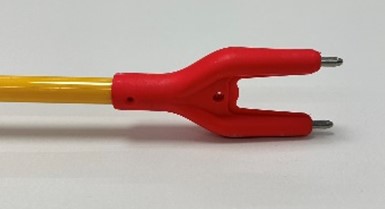Demand for sausages may fall this year

Demand for sausage products will decrease by the end of the year. Such a forecast was voiced by the commercial DIRECTOR of the Belaya Dolina Group of Companies (production and sale of sausage and dairy products) Albina Iskakova at the Agroinvestor conference Russian MEAT & Feed Industry - “Meat and animal feed industry. Prospects for development in 2022”. According to her, the market of sausages is stormy: in April, there was an increased demand for products with a long shelf life, but already in May it was observed to decrease.
“One of the reasons is the fall in real incomes of the population, people began to save money, including on food,” Iskakova explained. At the same time, sales of products of regular demand, such as sausages, in the first quarter even slightly increased compared to the previous quarter, while the demand for boiled sausages showed a negative trend. “This was due to the lack of a decent offer in terms of price and quality in the low price segment. Last year, as processors, raw material prices grew abnormally, everyone who could play with recipes tried to raise prices, but the network channel is very good at holding back price increases, and as a result, the consumer sees a real rise in price with a fairly long time lag,” Iskakova explained.
There is a high degree of consolidation in the sausage products market - the top 10 players account for almost 63% of the market. “This is one of the highest figures in the food production segment. For example, in MILK it is 53%, in other industries it is even less,” Iskakova said. In the first quarter, market participants showed themselves differently in terms of production volumes. Thus, the producers of the traditional sandwich group showed an increase in volumes. At the same time, enterprises operating in the low price segment, in particular, Atyashevo and Velikoluksky Meat Processing Plant, showed a negative trend. It was difficult for them to maintain the same level of value for money with which they entered the network. The sales of enterprises with a large share of expensive sausages in their portfolios also fell.
One of the growing areas in the segment of sausage products is the production of products under chain brands (PL). According to Iskakova, this is due to the fact that chains want to control producers more. However, so far the share of sausage products sold under private label accounts for no more than 20% of all products presented in this category, while in Western countries the figure reaches 50-60%. In the first quarter of this year, according to Iskakova's observations, there was an increase in the share of private labels in sausages and raw smoked products. She believes that the share of private labels will continue to increase in all categories of sausages.
This year, the sausage market may experience negative production dynamics, while in monetary terms the results will remain at the level of last year, Iskakova predicts. This is due to the increase in prices, which, according to the results of the first quarter, increased by 16% on average in the segment of sausages.
The drop in demand will primarily be noted in expensive segments - raw smoked sausages, meat snacks, as well as in semi-smoked and boiled-smoked sausages. “This is a sad fact for the industry, because it was on these products that processors and manufacturers earned their margin,” Iskakova emphasized.
A drop in demand for expensive high-margin products was already observed in the first quarter, and not only from the end consumer. “Networks are already reducing matrices, and ahead of schedule, realizing how much demand will fall,” Iskakova said. But there is some good news for the industry, she says: retailers have become more sympathetic than before to producer price increases: this year they could be increased almost every month, while before it could be done no more often than before. once every three months and no more than 5%. “Increasing prices is an extreme measure, and we have never abused it; moreover, we have suffered losses from sharp jumps in raw material prices at our own expense. Therefore, we are glad that in the first quarter the networks did not engage in formalism, but were ready to consider reasoned price increases more often than prescribed in the contract,”
Read together with it:
- В Минтруда напомнили об основных мерах безопасности во время проведения республиканского субботникаНовости темы 25 октября, Минск. Как обеспечить безопасность проведения республиканского субботника, рассказали БЕЛТА в Министерстве труда и социальной защиты. Сегодня республиканский субботник объединит сотни тысяч белорусов. В ведомстве напомнили об основных мерах безопасности во время его проведения. Если во время субботника сотрудники находятся на своем рабочем месте, обеспечение здоровых и без...
- Callas spoke about the EU's joy over new US sanctions against Russia.The European Union welcomes the US "signals" regarding RUSSIA, Kallas said. She called Washington's new sanctions against Rosneft and LUKOIL a "signal of strength" and agreement between Europe and the US. Moscow considers the sanctions illegal.The European Union approves the US imposition of new sanctions against Russia, European Union Foreign Minister Kaja Kallas told reporters. Kallas published ...
- Новое видео на нашем канале: Тысячи верблюдов под одним взглядом: как устроена смотровая площадка в конецентре Бауржана ОспановаРазговор с Бауржаном Кенесбековичем Оспановым о верблюдоводстве в Казахстане. Зачем казаху верблюд, как устроен конецентр и смотровая площадка где тысячи верблюдов проходят бонитировку. И снова, друзья мои, мы беседуем с известным казахстанским бизнесменом и меценатом Бауржаном Кенесбековичем Оспановым - человеком, который не просто развивает сельскохозяйственный бизнес, но делает это системно, с ...
- Nalchik Meat Processing Plant Puts Its Accounts Receivable Up for AuctionThe starting price will be gradually reduced by 20% every two days, with a minimum of 5,000 rubles. This information was posted in the Unified Federal Register of Bankruptcy Information. The plant, registered in 2010, primarily operates in MEAT processing and canning and was declared bankrupt in 2015 at the initiative of the Russian Agricultural Bank. As of today, the total amount of creditors' cl...
- Modernization of poultry farming in the Nizhny Novgorod region: new opportunities and production growthThe project, implemented under the regional preferential lending program, allowed the Russkoye Pole agricultural holding to invest 440 million rubles. Regional Agriculture Minister Nikolai Denisov reported that the organized sector produced 88,400 tons of poultry MEAT in 2024 , with an expected increase to 93,8......
- Proper insemination of cows: how genetic and physiological factors influence herd productivityGenetics plays a significant role in determining the reproductive fitness of bulls, and daughter pregnancy rates should be compared to accepted standards. If a farm's performance falls short of the baseline, using less-than-optimal bulls can still improve fertility. Cow physiology is also crucial for successful insemination. Feed quality, housing conditions, and veterinary care directly impact res...
- The EU imposed sanctions against Medvedev's aide and the HSE rector.The sanctions include AvtoVAZ CEO Maxim Sokolov, Medvedev aide Oleg Osipov, HSE Rector Nikita Anisimov, three children's ombudsmen, a North Korean general, and others. In total, the EU has added 21 individuals to the sanctions list .As part of its latest sanctions package, the European Union imposed restrictive measures against individuals, including AvtoVAZ CEO Maxim Sokolov, Assistant to Deputy ...
- Jobs, Musk, Bezos: How Business Gurus Make Meetings Less ExhaustingSteve Jobs once refused to attend a meeting with the US President because the attendee list was too long. Anna Yoshitsugu, Senior Strategy and Development Manager at Uber, explains how business gurus prevent meetings from "stealing" their time.Let's say you hold one meeting each week, it lasts two hours, and there are ten people in attendance, each with an average salary of 1......
- Yle has learned of the possible closure of a Finnish airport popular with Russians.Lappeenranta Airport, Finland Lappeenranta Airport inFinland may close due to losses, according to Finnish broadcaster Yle. Among its clients were tourists from RUSSIA, whose numbers have declined sharply since 2014. According to the television company's data, the airport's operations may be suspended due to EU policy, which stipulates that unprofitable airports should not be supported by public f...




























































